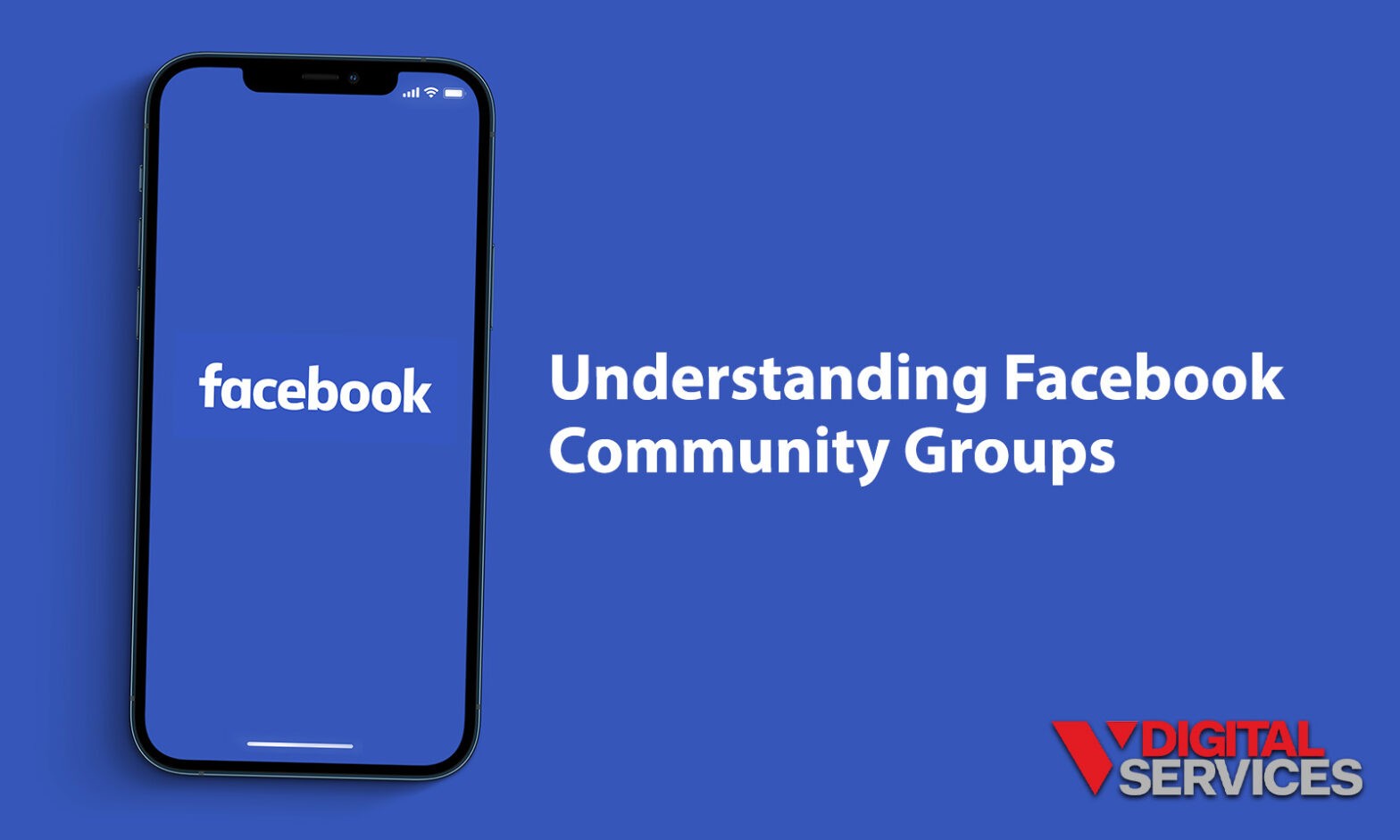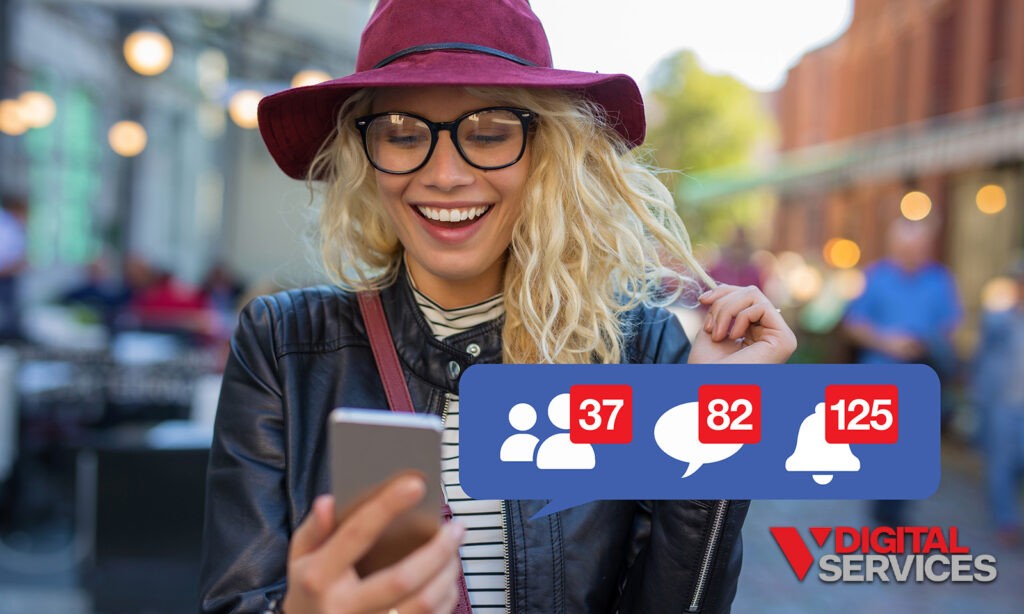Facebook Community Groups are becoming an indispensable business tool, providing a powerful connection, discussion, and engagement platform. These online communities encourage interaction between like-minded individuals, fostering a sense of belonging while providing valuable insights to businesses about their consumers. Whether searching for Facebook group ideas to boost your brand or seeking tips on enhancing Facebook group engagement, understanding the essence of Facebook Community Groups is key.
This comprehensive guide is designed to introduce you to Facebook Community Groups and how they function, delve into their benefits for businesses, and provide practical advice on setting up your own group. We’ll also share a trove of effective strategies to drive engagement posts for Facebook groups, ensuring your community remains active and invested.
The result? A thriving, engagement-driving social media presence that helps propel your business towards your larger goals.
Understanding Facebook Community Groups
Before you can dive into creating engagement posts for Facebook Groups, you’ll first need to establish a solid understanding of exactly what they are, how they function, and what they can offer your business.
What are Facebook Community Groups?
Facebook Community Groups are online spaces created within the Facebook platform that allow people with shared interests to connect, communicate, and collaborate. They serve as dynamic forums where members can discuss topics of mutual interest, share resources, ask questions, and support each other. From hobby groups and networking forums to fan clubs and support groups, these communities come in various types and sizes.
Facebook Community Groups offer businesses a unique opportunity to initiate closer relationships with customers and prospects. They serve as a vibrant hub for a brand’s most active followers, providing a platform to share updates, gather feedback, and foster a deeper sense of community. They can be leveraged as a powerful tool for customer involvement, retention, and loyalty, bridging the gap between businesses and their customers in an interactive, personable way.
How Do Facebook Community Groups Work?
Facebook Community Groups are designed to facilitate interactive and dynamic communication. As virtual platforms where users with common interests congregate, they promote two-way discussions, allowing members to share ideas, ask questions, and provide their insights. This user-centric approach differentiates community groups from traditional Facebook business pages, often limited to one-way business-to-consumer communication.
Facebook offers three groups: Public, Closed, and Secret.
- Public groups are the most accessible; anyone can join them and their content is openly visible.
- Closed groups add an extra layer of privacy, where the admin needs to approve member requests and only members can view and interact with the posts.
- Secret groups provide the highest level of privacy, being invisible to non-members and requiring an invite to join.
Choosing the right type of group largely depends on your business objectives and the level of openness and transparency you wish to cultivate. A public group may suit you best if you’re targeting maximum visibility and inclusivity. However, a closed or secret group may be more apt if your group handles sensitive topics or requires a controlled environment to ensure constructive discussions.
What are the Benefits of Facebook Community Groups for Businesses?
In the digital era, community-building has become the linchpin for businesses seeking to foster stronger relationships with their audience. Facebook Community Groups can play a crucial role in this evolution, providing numerous benefits for businesses.
The primary advantage lies in their ability to create a two-way communication channel between your brand and your customers. By facilitating interactions, groups provide a unique space where customers can voice their opinions, ask questions, share experiences, and even provide suggestions about your offerings. This feedback can prove invaluable, offering you a wealth of insights that can inform future product development and marketing strategies.
A vibrant and active Facebook group can significantly increase your brand’s visibility and credibility. The more engaging your group’s content, the higher your organic reach, as Facebook’s algorithm prioritizes active groups in users’ feeds. As a result, not only does your brand gain more exposure, but it also cultivates a sense of community among members, leading to increased customer loyalty.
How to Set Up a Facebook Community Group for Business
Setting up a Facebook Community Group for your business may seem like a daunting task, but it can be done in a few simple steps.
- Start by navigating to the “Groups” section on your Facebook account and clicking on “Create Group.”
- At this stage, you’ll be asked to provide some preliminary details about your group. This includes your group’s name (choose something catchy yet relevant), privacy settings (Public, Closed, or Secret), and the initial invitees (a few colleagues or loyal customers).
- One of the key aspects of setting up your group is defining its rules and guidelines. This is an essential step to ensure your group maintains a respectful and engaging environment.
- These guidelines should be easy to understand and enforceable and cover areas such as acceptable behavior, content relevance, advertising limitations, and the repercussions of breaching these rules. Always remember a well-managed group sets the stage for productive discussions and minimizes the chance of conflicts.
- The customization of your group plays a pivotal role in its success. This includes selecting an engaging cover photo that resonates with your brand’s ethos, writing a compelling and informative group description, and deciding on the group’s tone (friendly, professional, casual, etc.). The tone you set will guide members on the type of interaction expected.
- A crucial aspect of customizing your group is planning for consistent and engaging content. Regularly posting intriguing and relevant information is key to driving member participation. Later in this guide, we’ll do a deep dive into how to use content to boost Facebook Group engagement – but you’ll want to start thinking about your ideas as soon as possible.
- You can utilize a variety of content types, from thought-provoking questions and industry news to success stories and live Q&A sessions. Remember, the more your members engage with your content, the more invested they become in the group and by extension, your brand.
Building a thriving and engaged Facebook group takes time and effort. It demands patience, creativity, and a continuous commitment to nurturing engagement. Be prepared to adapt and modify your approach based on your group’s response. Continually learn from your community, gauge what works and what doesn’t, and progressively refine your strategy to grow and strengthen your group’s participation.
Creating High-Quality, Audience Tailored Content
One of the most critical aspects of maintaining an engaged Facebook community group is consistently creating and sharing high-quality content that resonates with your target audience. High-quality content is informative and valuable and relevant to your audience’s interests, challenges, or goals. Ideally, from the very beginning of your Group, you’ll be prepared with excellent content that aligns with your audience.
To create audience-tailored content, you must first clearly understand who your audience is. Invest time in getting to know them – their demographics, interests, and what they value most about your group. This can be achieved by paying attention to the discussions and posts in the group, conducting polls, or directly asking for feedback.
Once you understand your audience, focus on creating content that addresses their interests and challenges. This could be informational articles, how-to guides, educational videos, insightful discussions, or entertaining posts – as long as it adds value and interests your audience.
Keep in mind that high-quality content is also well-presented. Use clear and concise language, appealing visuals, and a friendly tone to make your content more engaging. Encourage comments, likes, shares, and other interactions by ending your posts with an engaging question or call to action.
Additionally, be consistent with your posting schedule. Regularly sharing high-quality content keeps your group active and prompts members to check in frequently. However, avoid spamming the group and maintain a balance that keeps members engaged but not overwhelmed.
Remember, your goal is not only to interest your audience but also to build a relationship with them. High-quality, thoughtfully targeted content can help establish your brand as a valuable resource, strengthen your community, and formulate a more engaged and active Facebook group.
Practical Facebook Group Engagement Ideas and Tips
An active and engaged Facebook community doesn’t happen overnight; it requires time, strategy, and a steady stream of engaging content that resonates with your members. Remember, the goal isn’t simply to amass followers but to create a vibrant, active community where each member feels valued, heard, and connected.
Below, we’re breaking down our top practical tips and tricks that will help supercharge engagement within your group.
Tagging New Members in the Welcome Post
The first step in fostering engagement is making your new members feel welcome. When a new member joins your group, consider tagging them in a welcome post. A personal welcome message can make a difference in getting new members to engage right from the start. It also provides a warm introduction and shows them that their presence is noticed and appreciated.
This initial interaction helps to set the tone for their participation in the group, developing a sense of belonging and encouraging them to interact with other members and posts.
Utilizing Facebook Live Videos
Facebook Live is a powerful tool to boost engagement. You can host Q&As, product demos, or behind-the-scenes tours. Live interactions create a sense of community and give members an exclusive look at your business.
These videos also allow for real-time communication, making interactions more personal and dynamic. You can ensure maximum participation by notifying members when a live session is about to start. Schedule these videos regularly to provide members with an engaging, immersive experience.
Organizing Fun Facebook Group Games and Rewards
Interactive games and rewards can infuse a sense of fun and camaraderie within your Facebook group. Activities like trivia contests, scavenger hunts, or caption competitions can serve as prompts for members to participate. Furthermore, providing rewards—be they virtual accolades or tangible prizes—can create a sense of anticipation and make members feel valued for their participation. These activities can add a layer of excitement to the group, encouraging ongoing engagement.
Running Contests and Giveaways
Contests and giveaways can serve as strong incentives for active participation. Not only do these create a buzz within the group, but they also offer members a chance to win something valuable. When running contests, ensure the prizes are relevant to your group’s interests to encourage maximum participation. For example, if your group revolves around photography, a new lens or a photo editing software license can serve as an attractive prize.
Conducting Polls for Engagement
Polls are a quick and easy way for members to share their opinions. They produce engagement and provide valuable insights into your audience’s preferences and opinions. You show members that their opinions matter by asking for input on future group activities, content ideas, or simply their experiences. These polls can guide your strategy for maintaining engagement and ensuring the group stays relevant to its members.
Timing and Format of Posts
Remember to consider the importance of timing and format when it comes to maximizing engagement. Monitor when your group members are most active, and schedule your posts accordingly. Experiment with various post formats—text, images, videos, polls—and see what resonates best with your audience. Remember, variety is the key. Regularly changing up the content type can keep your group members interested and engaged.
Encouraging Success Posts and User-Generated Content
Invite members to share their success stories or experiences related to the group’s topic. This form of user-generated content can create a sense of camaraderie and inspire others within the group. It allows members to learn from each other’s experiences, creating a sense of community. Recognizing and sharing these posts can also make the contributors feel valued and encourage further participation.
Collaborating with Brands for Purpose-Led Campaigns
Collaborating with brands that align with your group’s values can help create purpose-led campaigns. These partnerships can increase engagement and attract new members supporting the same cause. For example, if your group focuses on sustainable living, partnering with an eco-friendly brand for a campaign can amplify your reach while reinforcing your group’s values.
Utilizing Badges for Identification
Badges can help members identify group roles—admins, new members, and top contributors. This helps build a sense of hierarchy and recognition, motivating members to engage more. Badges also help new members identify who they can turn to for help and recognize who are the active and trusted members of the community. They create a visual representation of engagement, promoting healthy competition among members.
Reposting the Best Engagement Posts
Highlight top-performing posts by sharing them again. This recognizes the original poster and encourages others to engage in hopes of being featured. Reposting the best content adds value to your group by showcasing informative, entertaining, or insightful member contributions. This can also serve as inspiration for other members to contribute high-quality content, creating a cycle of positive reinforcement for active engagement.
Tracking Engagement Metrics
Metrics provide invaluable insights into your group’s performance. By monitoring metrics such as active members, popular posts, and peak engagement times, you can tailor your strategy to what works best. You can identify trends and see what kind of posts drive the most engagement. These insights can guide your content strategy, helping you create more of the content that your group members appreciate and engage with.
Reducing Spam
Spam can dilute the value of your group and hinder engagement. By having clear rules against spam and promptly dealing with violators, you maintain a quality space for genuine interaction. This also shows members that you care about the integrity of the group, which can encourage more authentic engagement. Regular monitoring and prompt action against spam posts are key to maintaining a healthy, engaging group environment.
Experimenting with Facebook’s Group Post Features
Facebook provides various features designed to boost engagement. These features can add variety to your content and stimulate interaction, from AMA (Ask Me Anything) sessions and prompts to collaborative posts. Regularly experimenting with these features can help you discover new ways to engage your audience and keep your content fresh and engaging.
Offering Freebies and Recognizing Top Contributors
Recognizing top contributors can make them feel valued and motivate others to engage more frequently and meaningfully. Offering exclusive freebies such as eBooks, discount codes, or early access to products can incentivize continued engagement. Regularly celebrating top contributors and rewarding active participation can motivate your community members to engage more actively and consistently.
Creating a Pinned Post for Added Value
A pinned post is a post that is saved in a position at the top of your group feed, and it can provide essential information, welcome new members, or highlight valuable content.
This can prompt immediate engagement from new members and serve as a constant source of valuable content for existing members. The pinned post can include a variety of information, such as group rules, upcoming events, or resources, making it a versatile tool for maintaining engagement.
Inspiring Interaction through Tagging
Tagging members in posts or comments can draw their attention and provoke interaction. However, using this method judiciously is crucial to encourage involvement without annoying members.
For example, if a particular post or discussion is highly relevant to certain members, tagging them can be beneficial. This personal touch can enhance their engagement and make the discussion more dynamic and insightful.
Creating a Core Group of Engaged Users
Establish a core group of active users who consistently engage with your posts. Their activity can stimulate others to participate, enhancing the group’s overall engagement. Encourage this core group to share their thoughts, answer other members’ questions, and create posts.
Their constant involvement can set a positive example for other members, creating an engaging and interactive atmosphere within the group.
Recurring Themed Posts
Themed days like “Motivation Monday” or “Throwback Thursday” can provide a regular rhythm to your content and make members look forward to engaging. These recurring themes offer predictability, allowing members to prepare their thoughts or content in advance. This can lead to higher-quality interaction and consistent engagement from your members.
Hosting Offline Events
Consider hosting offline events or meetups for local members. These real-life connections can bolster online engagement by strengthening the sense of community. Whether it’s a casual meetup or an organized event, offline gatherings provide opportunities for members to deepen their relationships and feel more connected to the group, leading to enhanced engagement online.
Turning on Notifications for Enhanced Engagement
Encourage members to turn on notifications so they don’t miss out on new posts or updates. Immediate notifications can lead to faster and more frequent engagement, as members can respond or react as soon as a new post is published. This ensures that active discussions receive immediate attention and keeps the momentum of engagement going.
Creating Group Challenges
Challenges can form a sense of camaraderie among group members while also stimulating engagement. For example, you might consider setting up a photo challenge in a photography group or a writing challenge in a writers’ group. Challenges with a clear start and end date, guidelines, and a rewarding recognition system can lead to exciting and fruitful discussions.
Designated Q&A Sessions
Holding regular Q&A sessions, where members can ask questions about the group’s topic or the business/brand, can stimulate meaningful discussions. These sessions can be organized with experts, influencers, or brand representatives. They provide a platform for learning and engagement, which can add significant value to your Facebook group.
Member Spotlights
Highlighting members and their contributions, achievements, or stories can generate a sense of belonging and recognition. These spotlights can be regular features where members get to share about themselves, their journey, or their experiences related to the group’s theme.
Involving Members in Decision-Making
Involving members in decisions such as the group’s rules, new features, or event planning can make them feel valued and part of the community. This inclusion can increase the group’s investment, leading to more active and engaged members.
Creating Sub-Groups
If your group is large or covers a broad topic, creating sub-groups can help maintain focus and involvement. Sub-groups allow members to engage with more specific topics they’re interested in, which can lead to more meaningful discussions and stronger engagement.
Promoting Cross-Promotion Among Members
Allowing members to share their relevant content, products, or services on specific days can also boost engagement. This allows members to gain visibility and promotes a culture of support and collaboration within the group.
Leverage Facebook Groups for Your Business Success
Building and maintaining a buzzing Facebook Community Group can significantly bolster your business’s online presence. With the practical steps and tips discussed in this guide, you’re well on your way to nurturing a vibrant community that aligns with your brand and engages with your content.
However, creating, managing, and growing a successful Facebook group can be a challenging and time-consuming task. Balancing the demands of running a business while ensuring your group remains active and engaged might seem overwhelming – but that’s where our skilled social media strategists come in.
Here at V Digital Services, we offer comprehensive social media marketing services designed to help businesses like yours optimize the digital landscape. Our experts have vast experience in managing online communities, ensuring they grow and stay engaged. We can help you strategize and execute these tips effectively, allowing you to focus on running your business. And because we tailor our services to meet each client’s needs and goals, you can receive exactly the level of support you want.
If you’re ready to tap into the power of Facebook Community Groups and discover their potential to foster customer loyalty, drive engagement, and promote your business, connect with the V Digital Services team today!
Photo Credits: Kaspars Grinvalds, Diego Thomazini, focal point, Blue Planet Studio





 PREVIOUS
PREVIOUS